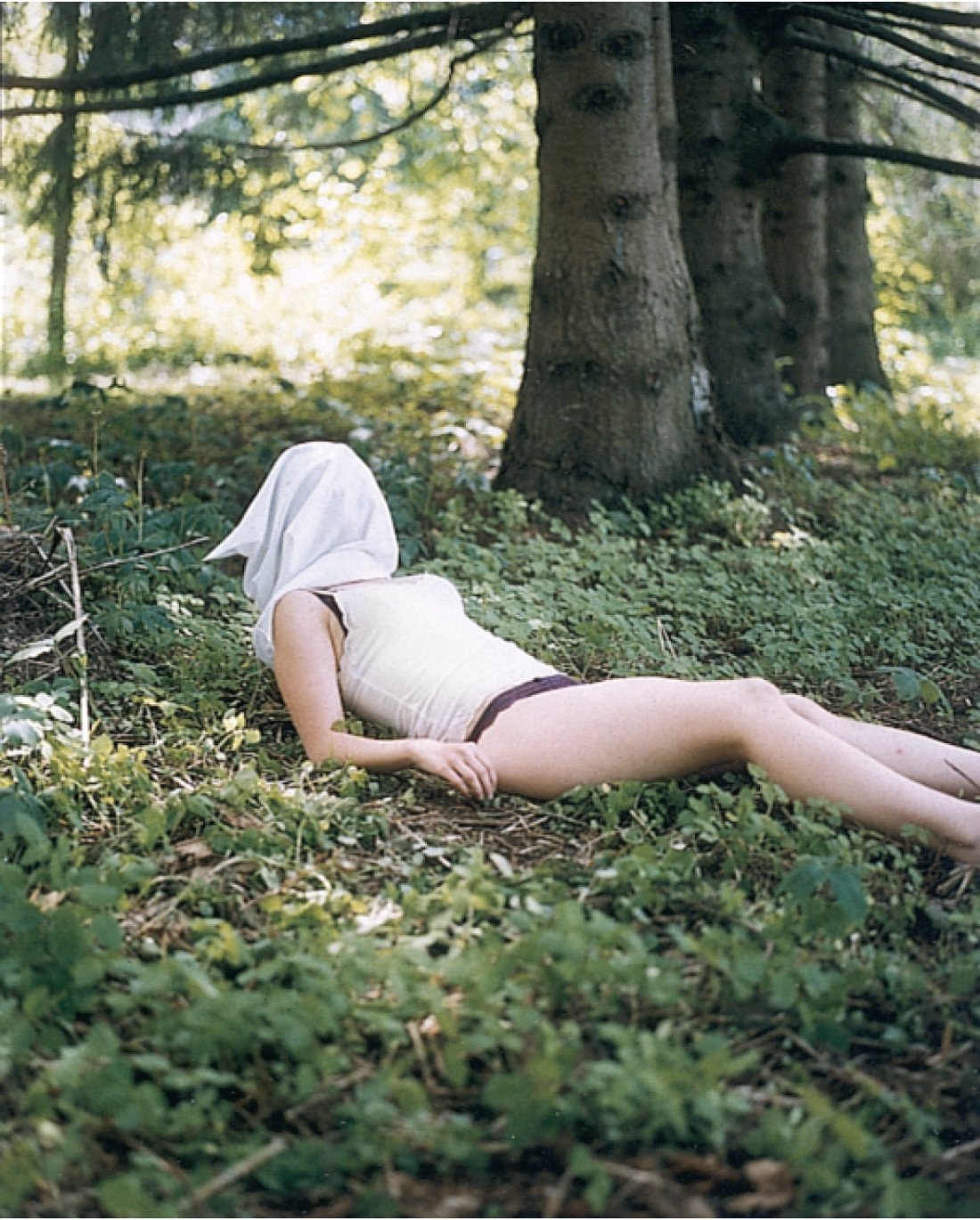Marisa Portolese
At the outset of William Gaddis’s brilliant novel The Recognitions, 1955, we meet protagonist Reverend Gwyon at a Spanish funeral procession. In a lovely vignette of memory theatre, he summons to mind his recently departed wife Camilla, who had enjoyed masquerades, but only those “of the safe sort where the mask may be dropped at that critical moment it presumes itself as reality.” In her new series of portraits, Montreal-based photographer Marisa Portolese essays a subversive masquerade for our times, in which her sitters never seem to drop the masks they wear at that critical moment. Should we then presume them as reality? And how should we presume?
There is nothing safe or predictable about Portolese’s masquerade portraiture, however orderly it is played out in her recent exhibition at Trois Points. In the masquerades of the 18th century, the focus was on the disguise of identity, and this is also true of Portolese’s “impure” portraiture wherein fantasy is still possible. In her subversive inversion of the masquerade ball, her sitters wear no baroque masks. Or do they? In any case, are their true features still hidden from us, finally?
Consider Recluse, 2005. Is the sitter really as unhappily reclusive as she is made to seem? Why is it that one spontaneously conjures up in mind’s eye its apparent antithesis—say, a François Boucher portrait of Madame de Pompadour—when looking at this remarkable portrait? Or say, rather, Boucher via Diane Arbus. Is this the apotheosis of the flesh? Nothing aestheticizing here. If we gaze long at Recluse, we come to see just how feminocentric and subversive and liberating Portolese’s aesthetics really are.

Marisa Portolese, Hush, 2005, c-print, 30 × 40”. Photographs courtesy Galerie Trois Points, Montreal.
There may seem an absence of contrived costumes or masks in Portolese’s recent work. But there is always the exception; namely, Hush, 2005, in which the sitter’s face is obscured by a white cloth. This portrait, with its haunting echo of a painting by Magritte, invokes darker subject matter still. It reminds us that sexuality took on a whole new dimension at the masquerade ball. The mask was, above all, an aphrodisiac. In this woodland setting, what drama is really being played out?
If issues like gender and role-reversal were always in play at the masquerade ball, Portolese asks that we confront ourselves in her imagery, perform our own role-reversal and assume the guises of alterity represented there. Portolese wants to deconstruct the idea of “beauty” itself, at least as it has come to be defined within the claustrophobic ambit of the male gaze so heavily entrenched in our advertising culture.
In her earlier “Belle de Jour” series, Portolese played, in her words, with the portrayal of women as various iconic identities such as divas, sluts, goddesses and sexual ingénues. In order to better subvert the male gaze, she deployed props, colour, symbolism and scenic backdrops to heighten the drama of their portrayal. There was nothing docile about the women she shot. Portolese wants to turn the whole antiquated beauty discourse on its head, and in recent portraits like Recluse she certainly succeeds in doing so.
In this new work, she pushes her ideas further still, and the expressions, gestures and poses of the subjects are all intended to reveal psychological intimacy. Sundry states of mind seized upon here—running the gamut from hope, desire, failure, demoralization, creativity, solitude, to daydreaming and contemplation—lend the work a highly charged emotional atmosphere.

Marisa Portolese, Recluse, 2005, c-print, 30 × 40”.
She accommodates in her masquerade a hectic conflation of psychological signs and emotional meanings that constitutes supplementarity. I mean the word as Jacques Derrida did, and it represents at once the excesses and the mise en abîme of her portraiture and is perhaps not wholly under her own control. It is that surplus of meaning that representation can never exhaust and that is produced by the play of identity within difference. Portolese imbues her masquerade with this supplementarity in order to better peruse the workings of representation itself and to unhinge us from our rationalizations and presuppositions and perhaps even our prejudices.
In works like Selena, 2004, Laura, 2005, and Doll Heart, 2004, notions like “good” portraiture and “grotesque” realism lose their meanings as the supplement underscores the inexplicability and ruptures of our lived experience, leaving us confounded and at sea, imagistically speaking. The artist invokes supplementarity in phrases of conflated significations because she wants to put paid to the status quo, undermine stubborn stereotypes and leave us unsettled. She seizes on the holy trope of aesthetic beauty—the naked or partially clothed white female body—and renders it unstable, releasing it from the projective eye and the rhetoric of the old order of representation.
Portolese effectively blunts the projective thrust of the gaze in portraiture of reparation that is also a subversive art of reframing female identity and, for her viewers, turning things inside out. As gifted feminist thinker Amelia Jones once instructed, and as Marisa Portolese now similarly persuades: beauty really is in the eye of the beholder. ❚
“Marisa Portolese” is on exhibit at Galerie Trois Points in Montreal from May 14 to June 11, 2005.
James D. Campbell is an independent curator and writer based in Montreal. His latest book is Nightland: The Art of Dana Velan (2005), co-published by the Maison de la Culture Frontenac, Montreal, and Spin Gallery, Toronto.

